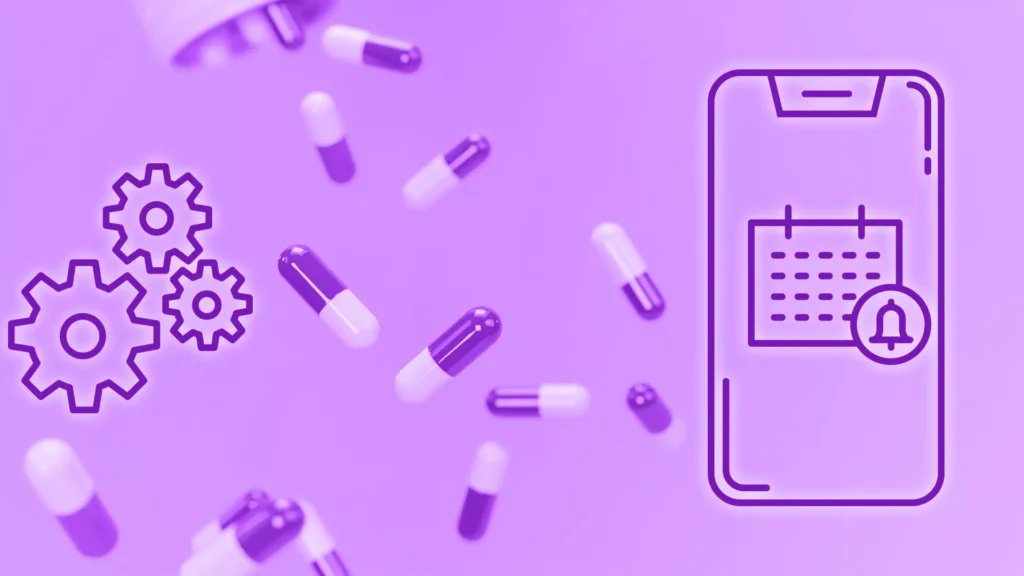Health systems and clinical providers alike are overwhelmed with high call volumes as most patient interactions generally first go through call centers and front office staff. How to reduce call volume is an ongoing concern of most healthcare providers since their staff spends hours on the phone each day dealing with routine administrative tasks such as appointment scheduling, registration, authorizations, and more. High call volume means patients have to wait on hold, and when forced to wait, many patients will drop off or abandon trying to make contact. Patients who don’t drop off may leave voicemails that need staff to respond at a later time, adding to an already overburdened workload. As a result, patients face long hold times, miss their appointments, and delay care. To combat high inbound call volume and improve staff efficiency, leading health systems are leveraging a patient communication platform to reduce call volume.
Why health systems must reduce call volume
Many patient service representatives spend many hours per day simply trying to get patients on the phone by placing outbound calls. The accumulated cost of playing “phone tag” for rescheduled appointments adds up fast – especially for a large health system with numerous patients. Every hour that a staff member spends handling calls is an hour they are not spending on more valuable tasks such as setting appointments, handling referrals targeted outreach, and slot-filling – all revenue-generating activities. In addition, high call volume leads to staff burnout as worker shortages and overworked call centers are unable to keep up with their workload to meet patient expectations.
A high call volume of patient service-related calls can put pressure and stress on front-office staff distracting them from patient care. Patient satisfaction quickly drops off as patients have to wait longer before being seen and if the problem isn’t rectified, some patients will permanently drop off. According to the 9th Annual Vitals Wait Time Report which surveyed patients about the state of patient wait times, 84% of respondents said that a reasonable wait time was important to a quality patient engagement experience. 30% of survey respondents said they have left an appointment because the wait time was getting too long. One in five patients reported changing providers when the wait times consistently were too long and physician offices with long wait times generally ranked lower on patient satisfaction scores.
The best solution to reduce call volume and improve staff efficiency
Instead of hiring more staff to handle calls, leading health systems are leveraging the technology of a patient communication platform to reduce call volume. By streamlining cumbersome, manual processes with automation and new workflows, medical personnel can increase their capacity and serve patients better while reducing the overall cost of care.
Although patient portals give patients convenient, secure, access to their personal health information, they don’t effectively reduce call volume the same way as a patient communication platform does. In a study published in the Journal of the American Board of Family Medicine, Oregon Health & Science University in Portland, researchers found simply implementing a patient portal for communications did not help health systems to reduce inbound call volume.
How to reduce call volume with a patient communication platform
A unified patient communication platform like Artera offers features and solutions that can manage high call volume effectively while improving staff efficiency. Patient communication technology can improve inbound call volume management and complete outreach to patients more efficiently with conversational messaging, which is ideal for lowering high call volume. Patients will receive messages from a number they know and trust. In addition, they don’t have to call and be on hold for routine tasks. In turn, staff members can respond quickly without disrupting their workflow. Conversational messaging can drastically reduce phone tag since both patients and staff can respond when it’s convenient for them.
It is especially effective if the platform offers multilingual language texting since texting patients in their preferred language is key to facilitating patient communications without needing a translator. Since phone calls to schedule appointments are the most common and most inefficient task for front office staff, providers have switched to convenient digital and online patient scheduling to help reduce call volume. In addition, innovative features like Artera Call-to-Text prompt patients who have been on hold for a pre-set amount of time, to press a specific number to connect with a staff member via text instead of continuing to wait on hold.
Another useful feature is broadcast messaging where providers can quickly send messages to large groups of patients which is ideal for last-minute schedule changes, inclement weather notices, and other mass notifications. If a provider needs to target specific patients, a campaign can be created to send specific messaging or information to a unique group of patients. One of the most effective features a patient communication platform can offer for reducing call volume are automated reminders which send scheduled messaging about routine tasks such as appointment reminders, confirmation requests, patient recalls, follow-ups, and more.
Some unified patient communication platforms like Artera offer AI-enabled technology such as Artera ChatAssist AI which allows organizations to build multi-step conversational flows that are designed to help with common patient questions, like pre-appointment reminders or medication refills. If needed, ChatAssist AI will automatically escalate a conversation with a patient to staff personnel.
Benefits of call volume reducing technology
In addition to improving a health system’s bottom line and increasing patient satisfaction scores, reducing call volume also adds to improving staff efficiency. Enabling patients to digitally communicate with their providers means fewer patients need to call in the first place. This also contributes to patient satisfaction since the reality is that most patients dislike calling their doctor and prefer digital self-service. When you empower patients to schedule and confirm appointments, update personal information, pay bills, and complete referrals, patients feel they have more control over their healthcare and have less of a need to contact their provider.
Here are some real-life examples of how health systems were able to reduce their call volume using Artera:
1) Jefferson Healthcare
Jefferson Healthcare is a healthcare system in Jefferson County, Washington. In an effort to reduce their no-show rate, the staff had to continue manually calling the patients to confirm their appointments, leading to an increase in phone calls and time spent on the phone. After implementing Artera, Jefferson’s general surgery office saw a 25% decrease in call volume. With fewer phone calls coming in every day, and less time spent on phones, the staff now has more time to dedicate to patient care and other priorities.
“Being able to send a text that will come through – that patients can read twice – is a wonderful thing. It’s been a great way to connect with them that way.” – Rachel Barbieto, Business Applications Analyst
2) UNC Health
Based in Chapel Hill, UNC Health is an integrated health care system comprised of many locations across North Carolina. After Artera was implemented, UNC Health began to consistently experience a decrease in the number of incoming phone calls.
“A decrease in phone calls is really important from a staff perspective because they say, ‘That makes a difference in my day-to-day work. If I’m answering 1,000 or 2,000 fewer phone calls every month, that makes a huge difference.’”- Velaire Elliott, Healthcare System Manager, Access and Clinical Integration
3) Cedars-Sinai Kerlan-Jobe Institute
Orthopaedic clinic Cedars-Sinai Kerlan-Jobe Institute needed help to address the high volume of phone calls that were going into voicemail. They anticipated that if they could reduce the incoming call volume, a higher percentage of calls would be answered immediately. Artera empowered the practice to answer more calls immediately, and transitioned patients onto the conversational messaging system which helped to improve patient satisfaction. With Artera, their overall call volume dropped by 20%.
“Artera has transformed our patient communications. It has blended naturally and intuitively into our practice operations, and we actively look for ways to use it even more. Artera gives patients a choice they never had before, and they absolutely love it.” – Siobhan Palmer, Director
4) Sansum Clinic
Sansum Clinic is a nonprofit healthcare network in Central California with over 200 providers and 700,000 patient visits per year. The pressures they faced around patient communication were exacerbated by a high call volume. Complex appointments required staff to spend a lot of time answering and placing calls. Sansum leveraged Artera to cut down on overall call time and streamline patient visits. With Artera, Sansum experienced a 25% decrease in calls per patient visit.
“We were looking for a more up-to-date patient engagement tool. We needed more timely communication with patients.” – Karen Handy, Vice President of Operations
5) Altura Centers for Health
As an FQHC, Altura Centers for Health was experiencing tens of thousands of phone calls every year, and their staff couldn’t process the high volume. Patients were spending too much time on hold, and satisfaction levels were falling. After implementing Artera, Altura’s call volume dropped by 10% while their patient satisfaction scores doubled.
“Seeing the call volume drop by a pretty significant number was one of the key things that our staff were happy about.” – David Ramirez, Clinical Support Technician
To learn more details about how the features of a patient communication platform like Artera can help you lower call volume and to read more about the above case studies, download the WELL Reduce Call Volume guide. ♥



